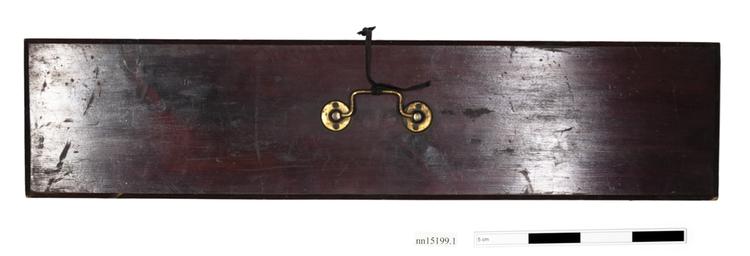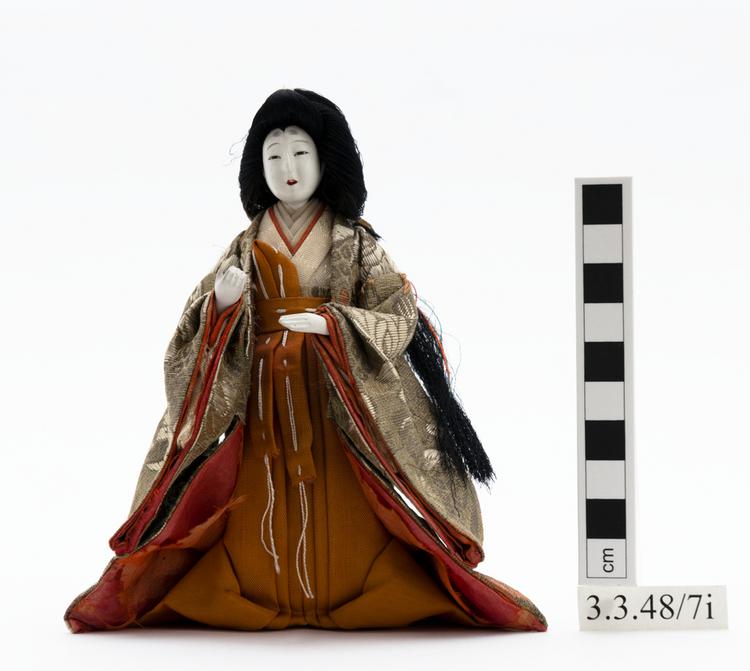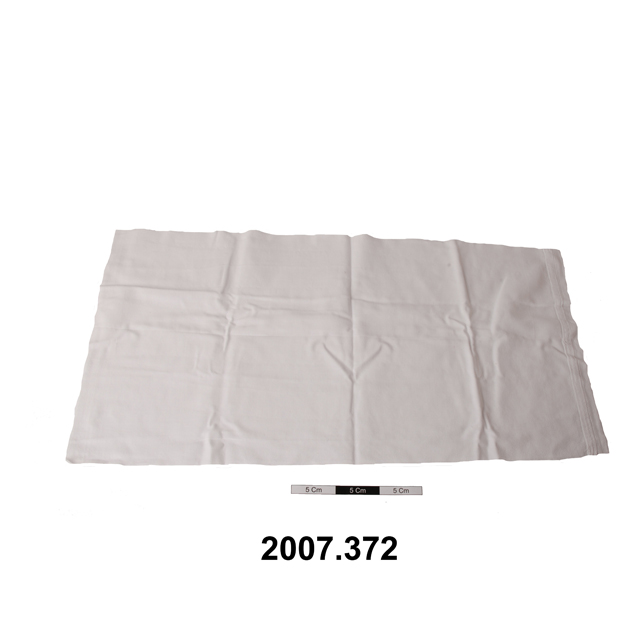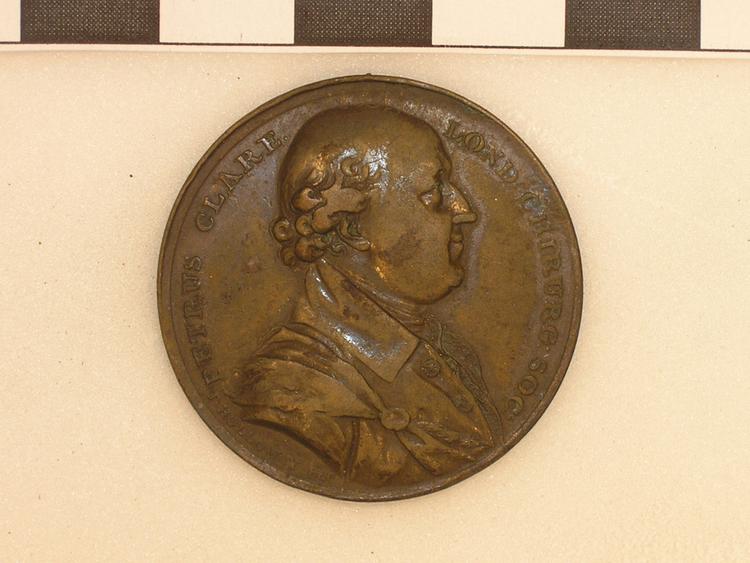


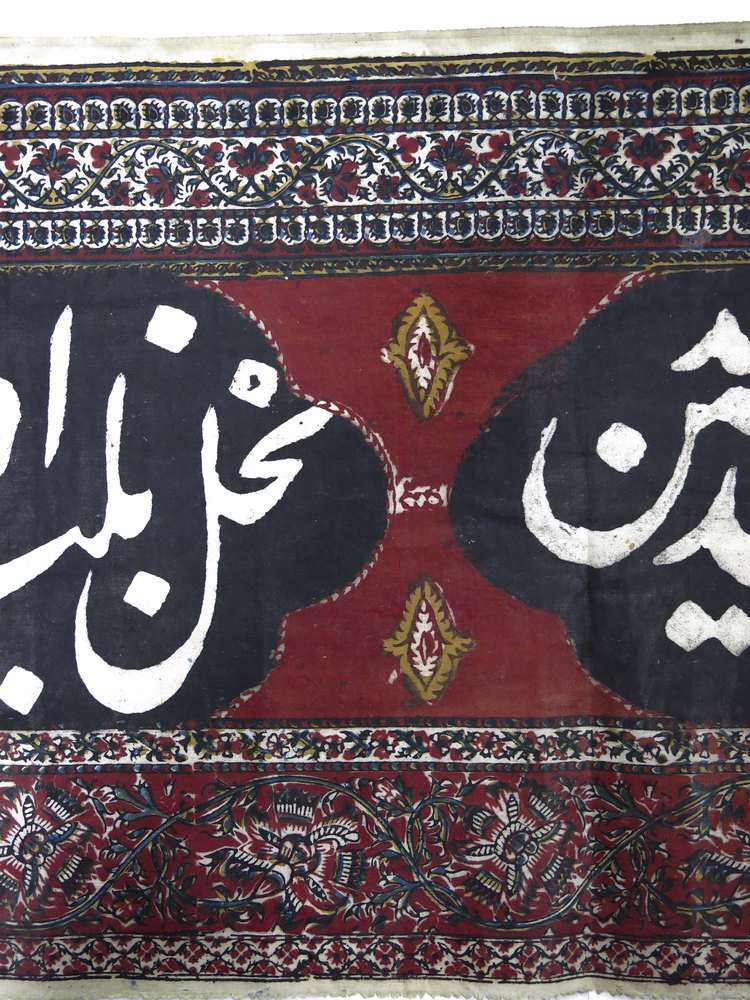
Polished cotton runner or banner, printed with Persian religious (Islamic Shi'ite) inscriptions in white on black medallions on a red ground. The twelve medallions are bordered on either side with wide bands of floral motifs in red and green on white. It is covered with verses dedicated to Imam Hussein ibn Ali (third Shia Imam) by Mohtasham Kashani (1528–1588), a well-known Iranian poet active during the Safavid period whose poems on Karbala, Ashura and Imam Hussein are famous throughout Iran. Ashura is the Shia day of remembrance for the martyrdom of Mohammed's grandson Hussein ibn Ali at the battle of Karbala in 680 CE. The inscriptions include, in an alternating pattern, a verse by Kashani from his famous poem باز این چه شورش است که در خلق عالم است [Baz In Che Shooresh Ast ke Dar Khalghe Alam Ast], followed by praise to Imam Hussein: از انبیا به حضرت روح الامین رسید – Az Anbiya Be Hazrate Rooh-al-Amin Resid
یا ابا عبدالله الحسین – Ya Aba Abdullah al-Hussein
پر شد فلک ز غلغله چون نوبت خروش – Por Shod Falak Ze Gholgholeh Chon Nobat khoroosh
یا ابا عبدالله الحسین ادرکنی – Ya Aba Abdullah al-Hussein Adrekni
along with other objects such as metal Alams to symbolise the commemoration of the martyrdom of Imam Hussein ibn Ali throughout Iran and other countries with Shia populations. Such banners are hung in the streets, outside and inside of mosques, in Hussainia’s (congregation halls for Shia commemoration ceremonies, especially those associated with the remembrance of Muharram) and inside the houses of the more religious families in Iran, during the month of Muharram, especially around Ashura which falls on the 10th day of Muharram.



